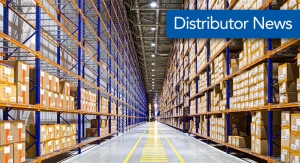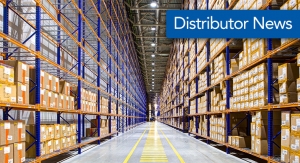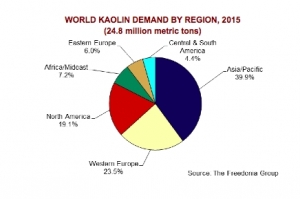07.18.16
Global demand for ground calcium carbonate (GCC) is growing, driven by the paper industry in China, where use of filler grade calcium carbonate is forecast to grow by an average of 1.9%py to 2020. The paper and plastics industries are the largest markets, accounting for around 39% and 27% respectively of estimated global consumption in 2015.
In 2015, consumption in paper slowed to its lowest level for two decades as increases in Asian production were offset by declines elsewhere. Paper loadings also tend to be higher in China because of the use of the most modern production technologies. In China, paper loadings of 40-50% are common and in some mills can be 55% or higher. The China Paper-Making Industry Association has reported a clear trend towards greater use of calcium carbonate at the expense of kaolin or other filler minerals because of its availability and lower price.
The plastics industry mainly uses calcium carbonate in rigid PVC as a filler. PVC use depends on the level of construction activity, which until recently has been concentrated in China. Construction activity in North America continues to recover but European levels are generally static at best. In paint, calcium carbonate is the main extender mineral used to reduce consumption of higher cost pigments, such as titanium dioxide. The most important market is in architectural coatings, use of which is again closely related to activity in construction, particularly housing. GCC is more commonly used than precipitated calcium carbonate (PCC) because of its lower price and greater availability, with the exception of China. The two other major end uses comprise rubber and adhesives/sealants, which are concentrated in Asia
GCC and PCC capacity is estimated to exceed 115Mtpy, of which over 80% is GCC. This also includes at least 5Mtpy of undifferentiated capacity located mostly in China. GCC capacity is highest in China, followed by the USA, Spain, and Norway. Around 60% of PCC capacity is sited in China with another 12% in the USA. A high proportion of PCC capacity is located at satellite plants supplying paper mills.
Twelve companies control around half of global capacity, with the three leading producers (Omya, Imerys and MTI) together controlling over 40% of GCC capacity and over 35% of PCC capacity. Omya of Switzerland operates over 100 plants with both GCC and PCC capacity. MTI of the USA, which developed PCC satellite plant technology, is the largest producer of PCC worldwide, also has substantial GCC capacity in the USA. Nearly all MTI's PCC capacity is operated on a satellite basis through joint ventures with paper mills. The Chinese calcium carbonate industry has traditionally comprised a very large number of small-scale producers. The industry is undergoing rationalisation and all plants with capacity of over 20,000tpy were to be closed during the 12th Five Year Plan of 2010 to 2015 to raise productivity and reduce pollution. Hundreds of producers remain in operation.
Overall calcium carbonate production in China rose to 27Mt in 2015 when GCC accounted nearly 60% of the total. GCC production did not really start in large volumes in China until the 1990s but its share of total calcium carbonate output is forecast to rise to over 70% by 2020. The use of PCC was historically higher in China than elsewhere as GCC only became widely available over the last 20 years.
Calcium carbonate tends to be a low-value and high-bulk commodity, which tends to makes shipment over long distances uneconomic. The majority of GCC trade takes place within Europe and is chiefly paper grade slurry from Norway. The amount of PCC traded internationally is much smaller than that of GCC because over 40% of capacity is located at satellite plants. Some higher value PCC grades are shipped worldwide as they can absorb higher freight rates. Marble and limestone chippings for GCC production are also shipped internationally, often between operations of the major multinational producers. A high proportion of this is also within Europe but material from Malaysia, Thailand and Vietnam is shipped to China and Japan.
Quoted GCC prices are related to particle size, colour, chemical purity and surface treatment of the raw material. PCC prices tend to be higher than those for similar grades of GCC because of higher production costs. Higher grade products, such as nano or pharmaceutical grades, command a substantial price premium. Paper grade PCC prices tend to show little change as consumers have long-term supply contracts.
Going forward, China will continue to dominate growth in demand for GCC, while its domestic industry reshapes in terms of consolidation and supply. PCC will continue to play an important role in the paper and plastics industries, linked in many cases by adjacent satellite mills and utilised for specific characteristics.
In 2015, consumption in paper slowed to its lowest level for two decades as increases in Asian production were offset by declines elsewhere. Paper loadings also tend to be higher in China because of the use of the most modern production technologies. In China, paper loadings of 40-50% are common and in some mills can be 55% or higher. The China Paper-Making Industry Association has reported a clear trend towards greater use of calcium carbonate at the expense of kaolin or other filler minerals because of its availability and lower price.
The plastics industry mainly uses calcium carbonate in rigid PVC as a filler. PVC use depends on the level of construction activity, which until recently has been concentrated in China. Construction activity in North America continues to recover but European levels are generally static at best. In paint, calcium carbonate is the main extender mineral used to reduce consumption of higher cost pigments, such as titanium dioxide. The most important market is in architectural coatings, use of which is again closely related to activity in construction, particularly housing. GCC is more commonly used than precipitated calcium carbonate (PCC) because of its lower price and greater availability, with the exception of China. The two other major end uses comprise rubber and adhesives/sealants, which are concentrated in Asia
GCC and PCC capacity is estimated to exceed 115Mtpy, of which over 80% is GCC. This also includes at least 5Mtpy of undifferentiated capacity located mostly in China. GCC capacity is highest in China, followed by the USA, Spain, and Norway. Around 60% of PCC capacity is sited in China with another 12% in the USA. A high proportion of PCC capacity is located at satellite plants supplying paper mills.
Twelve companies control around half of global capacity, with the three leading producers (Omya, Imerys and MTI) together controlling over 40% of GCC capacity and over 35% of PCC capacity. Omya of Switzerland operates over 100 plants with both GCC and PCC capacity. MTI of the USA, which developed PCC satellite plant technology, is the largest producer of PCC worldwide, also has substantial GCC capacity in the USA. Nearly all MTI's PCC capacity is operated on a satellite basis through joint ventures with paper mills. The Chinese calcium carbonate industry has traditionally comprised a very large number of small-scale producers. The industry is undergoing rationalisation and all plants with capacity of over 20,000tpy were to be closed during the 12th Five Year Plan of 2010 to 2015 to raise productivity and reduce pollution. Hundreds of producers remain in operation.
Overall calcium carbonate production in China rose to 27Mt in 2015 when GCC accounted nearly 60% of the total. GCC production did not really start in large volumes in China until the 1990s but its share of total calcium carbonate output is forecast to rise to over 70% by 2020. The use of PCC was historically higher in China than elsewhere as GCC only became widely available over the last 20 years.
Calcium carbonate tends to be a low-value and high-bulk commodity, which tends to makes shipment over long distances uneconomic. The majority of GCC trade takes place within Europe and is chiefly paper grade slurry from Norway. The amount of PCC traded internationally is much smaller than that of GCC because over 40% of capacity is located at satellite plants. Some higher value PCC grades are shipped worldwide as they can absorb higher freight rates. Marble and limestone chippings for GCC production are also shipped internationally, often between operations of the major multinational producers. A high proportion of this is also within Europe but material from Malaysia, Thailand and Vietnam is shipped to China and Japan.
Quoted GCC prices are related to particle size, colour, chemical purity and surface treatment of the raw material. PCC prices tend to be higher than those for similar grades of GCC because of higher production costs. Higher grade products, such as nano or pharmaceutical grades, command a substantial price premium. Paper grade PCC prices tend to show little change as consumers have long-term supply contracts.
Going forward, China will continue to dominate growth in demand for GCC, while its domestic industry reshapes in terms of consolidation and supply. PCC will continue to play an important role in the paper and plastics industries, linked in many cases by adjacent satellite mills and utilised for specific characteristics.







